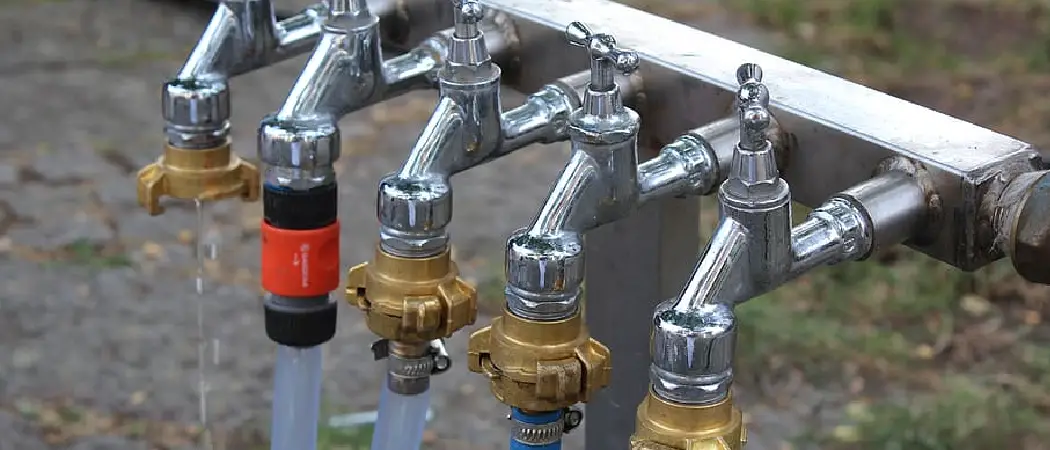In recent years, propane has surged in popularity as a reliable and versatile source of energy, fueling everything from residential heating and cooking to industrial processes. Despite its myriad applications, the efficacy and safety of propane use are heavily contingent on an often overlooked component—the gas lines that channel this fuel to its point of use.
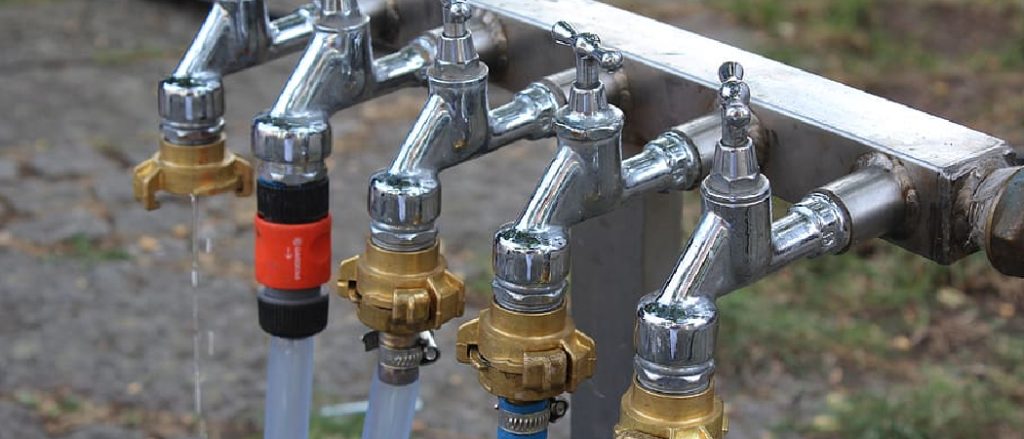
The integrity of these lines is paramount, and selecting the appropriate material is not just a consideration but an imperative for ensuring the safe and efficient delivery of propane. As we embark on this journey to discern what to use for propane gas line, we will explore the factors that influence this critical choice and guide you through selecting the best material tailored to your unique needs.
Why You Need to Know About What to Use for Propane Gas Line
Safety Considerations
First and foremost, propane gas line materials have a direct impact on safety. The ability to withstand high pressure is arguably the most crucial characteristic of any material used for propane piping. Propane is supplied in liquid form and must be stored under significant pressure to maintain its liquid state—this means that any breach or rupture along the gas line can lead to catastrophic accidents, including fire or explosion.
Furthermore, propane gas lines are expected to last for decades, and as such, they must resist corrosion from the elements in which they operate. The corrosive nature of soils or even weather conditions can compromise the integrity of certain materials over time, increasing the risk of leaks or ruptures.
Legal Compliance
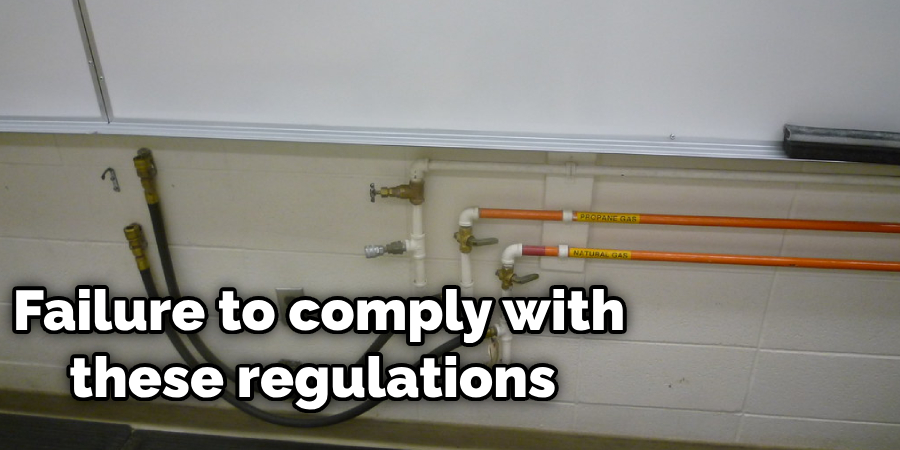
Aside from safety implications, proper selection of gas line material is also essential for legal compliance. The National Fire Protection Association (NFPA) has stringent regulations in place to ensure the safe and responsible use of propane, including the selection and installation of appropriate gas lines. Failure to comply with these regulations can result in fines or even loss of insurance coverage.
Cost Efficiency
In addition to safety and compliance, selecting the right material for your propane gas line can also impact cost efficiency. While some materials may have a lower upfront cost, they may not be as durable or resistant to corrosion, leading to more frequent repairs and replacements in the long run. On the other hand, investing in high-quality materials may result in higher initial costs but can save you money in the long term by reducing maintenance and replacement costs.
Environmental Impact
Finally, the choice of material for a propane gas line can have environmental implications. Some materials may have a lower carbon footprint or be more easily recyclable, making them a more sustainable option for your energy needs.
Understanding Propane and its Quirks
The Basics
Before diving into material selection, it’s essential to have a basic understanding of propane itself. Propane is a hydrocarbon gas that exists in liquid form under pressure. It is colorless, odorless, and non-toxic but has an identifying smell added for safety purposes.
Propane also has some quirks that must be taken into account when selecting the appropriate material for gas lines. For example, propane is heavier than air, and in the event of a leak, it can accumulate at ground level, increasing the risk of explosion or fire.
Material Compatibility
When choosing a material for your propane gas line, compatibility with the fuel itself is a critical factor to consider. Some materials may react chemically with propane or be incompatible with certain additives added to the fuel, leading to degradation and potential safety hazards.
Temperature Considerations
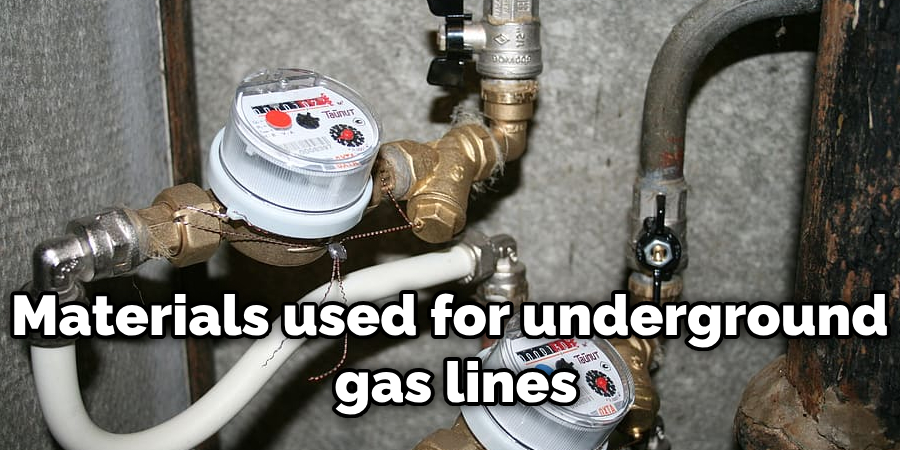
The temperature at which propane is stored also plays a role in determining the appropriate material for gas lines. As mentioned earlier, propane must be kept under high pressure to remain in liquid form. Therefore, materials used for underground gas lines should have a high resistance to extreme temperatures, while materials used for above-ground lines should also be able to withstand a wide range of temperatures.
What to Use for Propane Gas Line: Unveiling the Contenders
The Ironclad Warrior: Black Iron Pipe
Black iron pipe stands as a traditional favorite for propane gas lines, renowned for its durability and longevity—a true ironclad warrior against the test of time. It is ideal for both indoor and outdoor installations, offering robustness that few materials can match.
- Pros:
- Forging through time: Known for its strength, black iron is less likely to dent or break.
- Fire Resistance: High resistance to heat and fire.
- Cons:
- The rusting knight: Vulnerable to rust when exposed to moisture, necessitating routine maintenance.
- Bending out of shape: Its rigidity requires skilled labor for installation and can complicate the process.
Applications: Best suited for permanent, fixed installations where durability takes precedence.
The Gleaming Stream: Copper Tubing
Copper tubing, with its natural corrosion resistance, offers a gleaming choice for gas lines, combining functionality with aesthetic appeal.
- Pros:
- Shining bright: Excellent resistance to rust, and appealing for visible installations.
- Bending beauty: Flexibility allows for easy installation around obstacles.
- Cons:
- Pricey plumber: Copper’s costs can be significantly higher than other materials.
Applications: Ideal for those who prioritize longevity and have a higher budget. Suitable for both indoor and outdoor installations.
The Flexible Contender: CSST (Corrugated Stainless Steel Tubing)
CSST emerges as a modern alternative, prized for its flexibility and ease of installation in tight spaces.
- Pros:
- The bendy hero: Can be snaked around walls and obstructions without the need for multiple joints.
- Cons:
- Not all glitter is gold: Potential concerns about electrical grounding and meeting specific local regulations.
- Pricey protector: Generally more expensive than the traditional black iron pipe.
Applications: A go-to for retrofitting and installations in structures where traditional rigid pipes pose challenges.
The Modern Pipeline: PEX (Polyethylene) Tubing
PEX tubing is celebrated for its affordability and ease of use, though it is only sometimes accepted for propane gas lines.
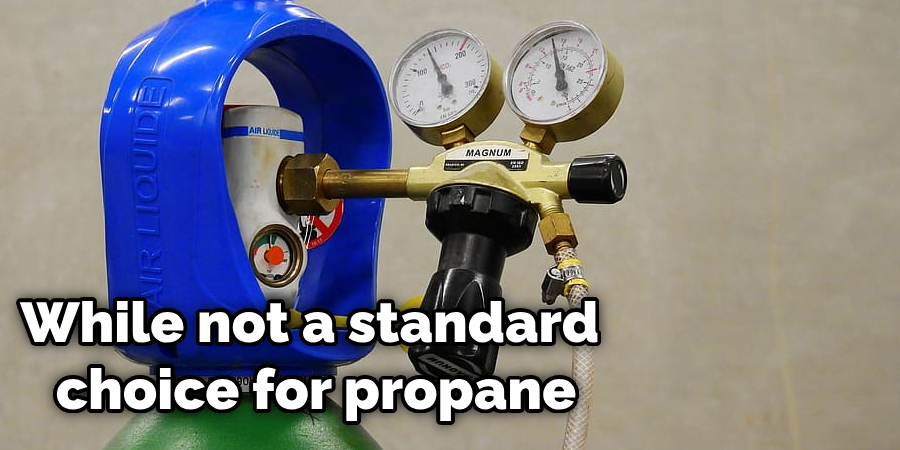
- Pros:
- The affordable champion: Lower cost and wide availability make it an economical choice.
- Cons:
- Not for high pressure: Not typically recommended for high-pressure propane lines.
- The hidden concern: Gas permeability could be an issue, posing safety risks.
Applications: While not a standard choice for propane, it can be considered for auxiliary lines where code permits.
The Silent Sentinel: HDPE (High-Density Polyethylene) Tubing
HDPE tubing is recognized for its durability and suitability for underground gas lines, hence dubbed the silent sentinel.
- Pros:
- The underground guardian: Excellent for buried lines due to its resistance to corrosion and chemical reactions.
- Cons:
- Fusions and fittings: Requires specialized tools and skills for safe installation.
- Not for all terrains: It may not be a fit for certain soil types, requiring an assessment before installation.
Applications: Recommended for underground installations, especially in environments where corrosion is a concern.
The Dark Horse: PVC (Polyvinyl Chloride) Pipe
PVC pipe is a dark horse for propane gas lines, often overlooked but possessing properties that make it worth considering in certain scenarios.
- Pros:
- Easy handling: Lightweight and easy to cut compared to other materials.
- Cost-effective: Generally less expensive than alternative materials.
- Cons:
- Brittle champion: Prone to cracking and breakage in extreme temperatures, making it unsuitable for outdoor installations.
Applications: Can be used as an alternative material for indoor gas lines, provided local code permits its use.
These are a few options if something comes into your mind regarding what to use for propane gas line. Ensure that you consult with a certified professional and adhere to local building codes for safe and compliant installations. With the right material, your propane gas line can serve as a reliable source of fuel for many years to come. Keep in mind the material compatibility, temperature considerations, and specific applications when making your decision. Now that you are well-informed about the contenders choose wisely and enjoy the benefits of a well-planned propane gas line. Happy heating! Keep warm and stay safe, folks!
Treading With Caution: The Risks of Mischoosing Propane Line Materials
Selecting the incorrect material for propane gas lines can lead to serious risks that compromise the safety of individuals and property. It’s vital to weigh these consequences when planning installations:
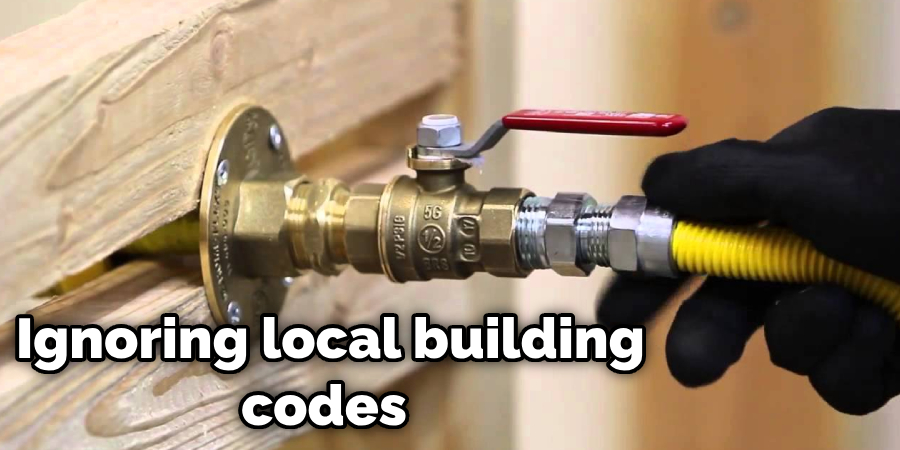
- The threat of leaks: Incompatible materials can fail under the pressure and temperature demands of propane, leading to gas leaks that are both hazardous and costly.
- Fire and explosion hazards: Leaks can quickly escalate into fire or explosion risks, especially in enclosed or poorly ventilated spaces.
- System longevity: Using substandard or unsuitable materials can drastically reduce the lifespan of the gas line system, necessitating premature replacement and added expense.
- Violation of legal standards: Ignoring local building codes poses not only safety risks but also legal repercussions, including fines and the nullification of insurance claims.
- Environmental impact: Material failure may lead not only to safety issues but also environmental pollution, affecting soil and water quality.
Each material has its unique set of challenges, and without proper guidance and adherence to standards, the cons can outweigh the pros. It’s imperative for safety’s sake to follow guidelines, engage certified professionals, and opt for the right material for your propane gas line needs.
The Art of War: Best Practices for Installation and Maintenance
Mastering the Craft: Proper Installation Techniques for Each Material
Proper installation is the cornerstone of safety in propane gas lines. Adhering to precision and code compliance ensures that each material serves its purpose without posing risks. Each type of tubing or piping material comes with unique installation techniques. For instance, the meticulous process of welding copper requires different expertise than the flexible but precise art of laying down CSST. Certified professionals must handle these installations, taking into account the material properties to create safe and secure connections.
Safety First: Essential Precautions to Prevent Leaks and Accidents
From awareness to testing, a safety-first approach is paramount when handling propane gas lines. This entails proper training for installers; regular system checks to detect any early signs of leaks, and strict adherence to safety guidelines. To prevent accidents, it’s crucial to follow a stringent protocol that includes proper ventilation, the use of correct tools, and regular maintenance schedules.
Maintaining Flow: Regular Maintenance for Long-Term Functionality and Safety
Regular maintenance of propane gas lines is essential for ensuring long-term functionality and safety. Scheduled inspections are necessary to monitor the condition of pipes and tubing while cleaning and timely repairs can prevent deterioration and prolong the system’s lifespan. Keeping a careful eye on gas line integrity helps safeguard against unexpected failures.
Troubleshooting Common Issues: Identifying and Addressing Potential Problems
Propane gas line systems, like any other, are susceptible to potential problems such as leaks, blockages, and general wear and tear. Proper troubleshooting starts with identifying the issue, be it through smell, a drop in gas pressure, or the use of leak detection equipment. Once identified, addressing these problems rapidly is critical; this could involve patching a leak, clearing a blockage, or replacing damaged sections of the line.
The Law of the Land: Local Regulations and Permits
Navigating Legal Requirements: Understanding Your Local Building Codes
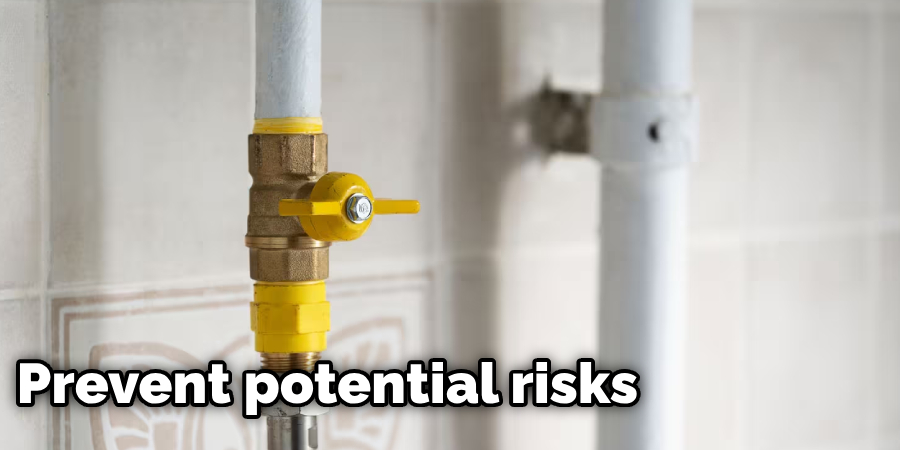
Local building codes play a crucial role in determining the materials and methods allowed for propane gas line installations. These regulations help ensure safety, prevent potential risks, and promote compliance with industry standards.
Permit Process: Seeking Approval Before Installation
Obtaining permits is necessary before installing any gas line system. This process ensures that the installation complies with building codes, and a certified inspector can verify its safety before completion. In addition, permits may also require adherence to specific guidelines, such as distance restrictions from other structures or utilities.
Bringing It All Together: Best Practices for Legal Compliance
Following proper procedures when obtaining permits and adhering to local building codes is critical in promoting safety and avoiding legal repercussions. It’s essential to research and understand these codes before initiating any installation project, working closely with certified professionals to ensure compliance every step of the way.
Conclusion
Choosing the right material for your propane gas line is crucial to ensure safety, longevity, and optimal performance. With careful consideration and adherence to industry standards, you can enjoy the benefits of a well-planned and installed gas line system without compromising the safety of individuals and property.
Remember, always err on the side of caution and seek professional guidance to avoid potential risks and ensure compliance with local regulations every step of the way. Keep warm, stay safe, and happy heating! Thanks for reading this article, “What to use for propane gas line?”

